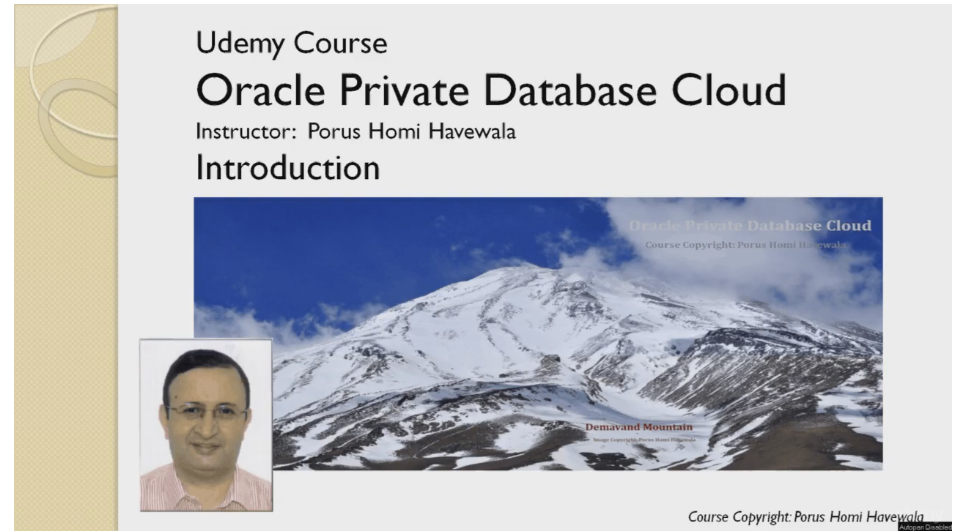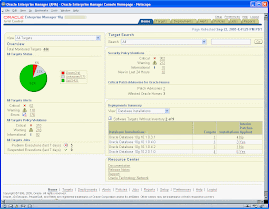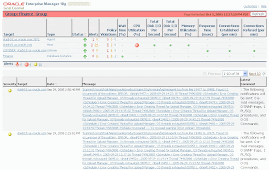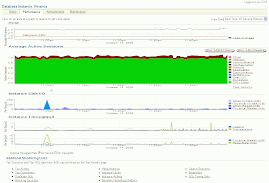By Gagan Chawla
Exalogic is the logical choice for running Business Applications and provides an excellent consolidation platform hosting wide range of application workloads. It’s important to have a comprehensive Apps-to-Disk monitoring of Exalogic system enabled including monitoring of business applications, software and hardware components together from a single Oracle Enterprise Manager Cloud Control 12c console.
There are two Exalogic configuration flavors specifically in the way Exalogic is implemented 1) Virtualized or 2) Non-virtualized/physical configuration. More details on system configuration with each Exalogic release are described in this MOS note here.
In this blog post, we will cover important steps that are required to enable Oracle Enterprise Manager Cloud Control (CC) 12c as a centralized monitoring platform with Apps-to-Disk visibility for either configuration of Exalogic.
Setting up Oracle Enterprise Manager Cloud Control 12c for monitoring virtualized Exalogic stack
- Setup your EM CC 12cR2 site with latest PSU if not already done. Refer to EM 12cR2 install/upgrade guide here
- Deploy EM CC 12cR2 agent on Exalogic Control Ops Center Enterprise Controller(EC) vServer
- Export Ops Center Enterprise Controller trust certificate and import it to Enterprise Manager Cloud Control Management Agent
- Ops Center Certificate should be imported to agent running on Ops Center Enterprise Controller.
- Steps to Export and import the certificate here
It's recommended to use emctl to import - emctl secure add_trust_cert_to_jks -trust_certs_loc $CERT_LOC/oc.crt -password welcome -alias - Restart the agent after importing the certificate
- Deploy EM CC 12cR2 agent on OVM Manager(OVMM) vServer. Deploy Oracle Virtualization (VT) plug-in on OMS if not already done and on agent installed on OVM Manager vServer.
- Configure OVMM for read-only access [Mandatory]. Steps to configure OVMM for read-only access are here. If OVMM was registered with EM CC prior to performing this mandatory configuration then you must run synchronize operation from OVMM target menu in EM CC [Important]. Note – vDC operations are done via Exalogic Control that has embedded EM Ops Center pre-installed in the Exalogic system. Refer to Exalogic Administrator’s guide here
- Register OVMM in EM CC site by following EM CC Cloud Administrator’s guide here . It’s recommended to use the same EM CC 12cR2 agent deployed on the OVMM vServer during the OVMM registration process.
- Deploy and configure EM CC ZFS plug-in by referring to ZFS plug-in installation guide here. It’s recommended to use the agent deployed on Ops Center Enterprise Controller vServer for discovering ZFS Storage Appliance target.
- Deploy and configure EM CC Engineered System Healthchecks plug-in by referring to plug-In Installation Guide here. It’s recommended to use the agent deployed on Ops Center Enterprise Controller vServer for discovering Healthchecks target.
- Discover Exalogic system using Targets -> Systems UI and select deployment type ‘Virtual’ and use agent deployed on Exalogic Enterprise Controller for Exalogic targets discovery.
- Configure Exalogic Guest Base Template and Exalogic network by referring to following guide here and deploy agents on guest vServers
- FMW, Apps targets and Application stack should be discovered in EM CC. In case of Oracle Applications on Exalogic, it’s recommended to have respective Apps plug-ins (FA, EBS, PSFT, Siebel etc) deployed and configured. Refer to Applications Management pack collateral here.
EM CC Plug-Ins required in case of virtualized Exalogic configuration –
- Fusion Middleware (FMW) Plug-in [Default plug-in and deployed out-of-box] - enables overall Exalogic stack management. Exalogic monitoring for virtualized configuration was introduced in FMW 12.1.0.3 plug-in (EM 12cR2 release)
- Oracle Virtualization (VT) Plug-in – enables Virtual Targets monitoring integration. VT monitoring integration for Exalogic was introduced in VT 12.1.0.3 plug-in (EM12cR2 release)
- ZFS plug-in – enables ZFS target monitoring
- Engineered System Healthchecks plug-in – enables Exachk integration in EM CC
- Oracle Applications plug-ins (FA, EBS, PSFT, Siebel etc) – enables respective Application Management capabilities
Setting up EM CC 12c for monitoring non-virtualized/physical Exalogic stack
- Setup your EM CC 12cR2 site with latest PSU if not already done. Refer to EM 12cR2 install/upgrade guide here
- Deploy EM 12cR2 agents on all Compute Nodes.
- Discover Exalogic system via Targets -> Systems UI and select deployment type 'Physical’ and use any of the agents deployed on compute nodes for Exalogic targets discovery
- Setup your EM Ops Center (OC) 12c site if not already done. Refer to EM OC 12c installation guide for Linux OS here and in case of Solaris OS here
- Discover Exalogic infrastructure targets in EM OC 12c by following EM OC feature reference guide here
- Deploy Exalogic Elastic Cloud Infrastructure (EECI) plug-in on EM CC OMS and management agent installed on OC Enterprise Controller server. Refer to EECI Plug in Install guide here for details and it’s also recommended to apply EECI plug-in patch 14214742. Each infrastructure component must be already discovered and managed in EM OC in previous step. Availability, performance and configuration Metrics for infrastructure components related to are collected by EM CC agent through EM OC JMX client.
- Configure EM OC Enterprise Controller and EM CC repository connection by following EM OC Plug in guide here
- Discover ‘Elastic Cloud Infrastructure’ target via Setup -> ‘Add Target’ -> ‘Add Targets Manually’ option and using agent deployed on Ops Center Enterprise Controller
- Deploy and configure EM CC ZFS plug-in by referring to ZFS plug-in installation guide here. It’s recommended to use the agent deployed on EM OC Enterprise Controller server for discovering ZFS Storage Appliance target.
- Deploy and configure EM CC Engineered System Healthchecks plug-in by referring to plug-In installation Guide here. It’s recommended to use the agent deployed on EM OC Enterprise Controller server for discovering Healthchecks target.
- FMW, Apps targets and Application stack should be discovered in EM CC.In case of Oracle Applications on Exalogic, it’s recommended to have respective Apps plug-ins (FA, EBS, PSFT, Siebel etc) deployed and configured. Refer to Applications Management pack collateral here.
EM CC Plug-Ins required in case of non-virtualized/physical Exalogic configuration –
- Fusion Middleware (FMW) Plug-in [Default plug-in and deployed out-of-box] – enables overall Exalogic stack management.
- Exalogic Elastic Cloud Infrastructure (EECI) plug-in - enables Exalogic rack infrastructure components monitoring in EM CC
- ZFS plug-in – enables ZFS target monitoring
- Engineered System Healthchecks plug-in – enables Exachk integration in EM CC
- Oracle Applications plug-ins (FA, EBS, PSFT, Siebel etc) – enables respective Application Management capabilities
Additional Collateral -
- Oracle Enterprise Manager 12c: Managing Exalogic Elastic Cloud Demo
- Oracle Enterprise Manager Cloud Control 12cR2 Exalogic Monitoring guide
- Understanding Exalogic Control
- Oracle Exalogic: A Guide to Maximizing Operational Management Benefits (PDF)
- Oracle Exalogic: A Guide to Administration Tasks and Tools (PDF)
Contributed by Gagan Chawla, Saurabh Sachdev and Sumit Choudhary















